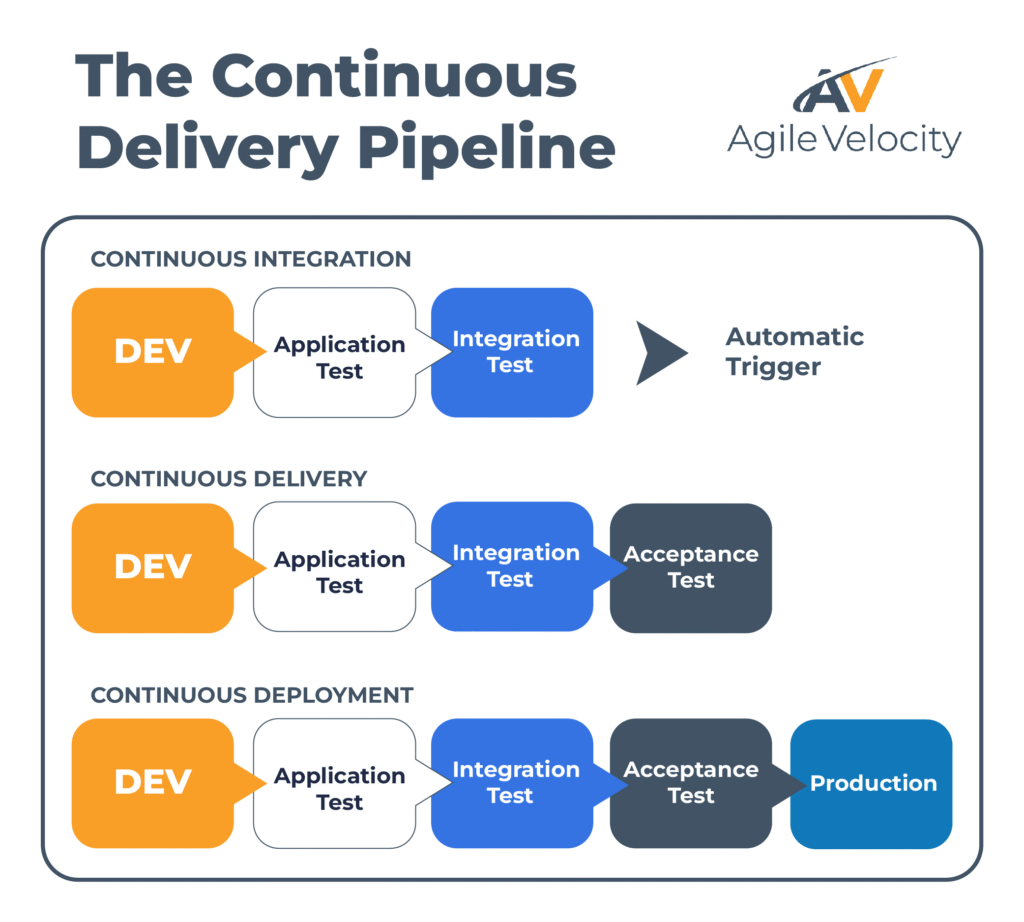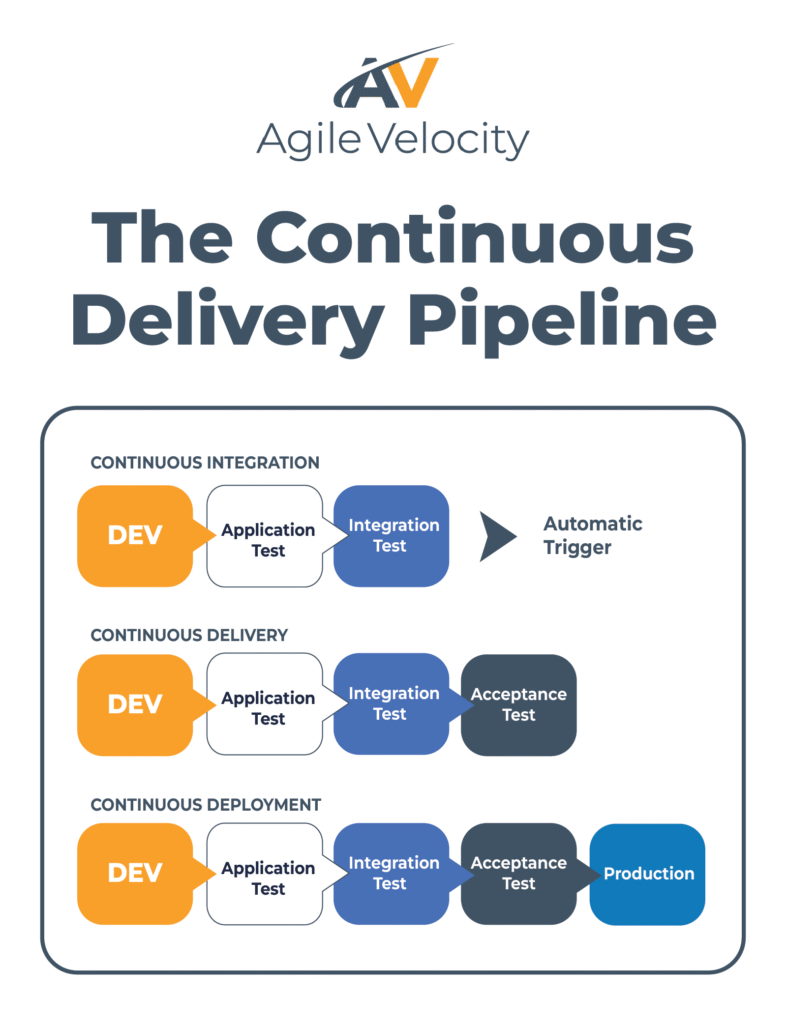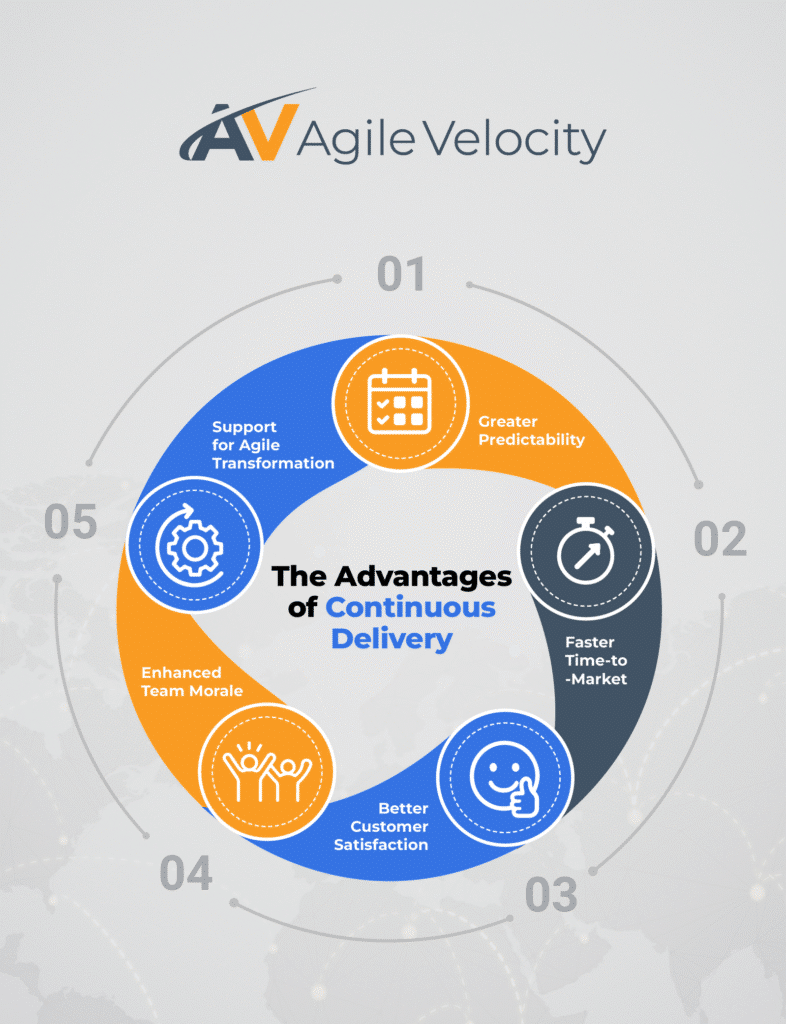In today’s software development landscape, speed, flexibility, and reliability are more than just buzzwords. They form the backbone of successful product delivery. One practice that stands out in enabling these qualities is continuous delivery. By ensuring that code can be reliably released at any time, continuous delivery empowers teams to adapt quickly to feedback, reduce risk, and provide customers with value-driven updates more frequently. When combined with continuous integration, teams can detect issues early and resolve them swiftly.
For software development teams, Agile practitioners, and technology leaders, the journey toward continuous delivery can transform not only day-to-day operations but also enhance customer satisfaction and support long-term strategic outcomes.
Many organizations struggle to bridge the gap between traditional release processes and a modern continuous delivery pipeline. This article sheds light on the key principles behind continuous delivery, its benefits, and how to integrate it into Agile frameworks. We will also explore how useful tools like Path to Agility® Navigator provide teams with a clear, structured, and trackable transition from older practices to a more automated and reliable approach.
By adopting continuous delivery, your organization can nurture a collaborative culture focused on incremental upgrades, practical improvements, and sustainable growth for years to come.
Understanding the Continuous Delivery Pipeline: Transforming Software Development Processes
Continuous Integration
Continuous Integration (CI) is the foundation of the continuous delivery pipeline, where developers frequently merge code changes into a shared repository, triggering automated builds and tests to catch issues early. Under this model, developers integrate their code changes as soon as they are complete, and automated tests run immediately to detect regressions and defects. If an issue arises, the pipeline flags it rapidly so that teams can address it before it escalates. This approach is particularly beneficial for teams practicing Agile frameworks, such as Scrum or Kanban. In Scrum, each Sprint concludes with a potentially shippable product increment; continuous integration reinforces this promise by ensuring that the product remains in a “ready-to-deploy” state at all times.
Traditionally, development teams might gather code changes over days or weeks, perform manual testing, and then scramble for a rushed “release day.” This outdated pattern can lead to issues like version conflicts, hidden defects, and delayed troubleshooting. Continuous integration reverses this approach, enabling a near-constant flow of small, incremental releases.
Continuous Delivery
Continuous Delivery (CD) builds on CI by ensuring that the code is always in a deployable state, with automated testing and staging processes in place—but with manual approval before going live.
Continuous Deployment
Continuous Deployment takes it one step further, automatically releasing code to production without human intervention. It eliminates the need for manual approvals, allowing teams to deliver features, fixes, and improvements to users rapidly and frequently. This approach supports Agile values by enabling fast feedback loops, reducing time-to-market, and increasing adaptability.
Together, these practices form the continuous delivery pipeline, a streamlined workflow that enables fast, reliable, and repeatable software delivery.
Beyond process optimizations, continuous delivery supports organizational agility. By eliminating bottlenecks and creating a seamless path to production, businesses can respond quickly to market shifts or customer feedback. Organizations that have migrated from slower, milestone-based release cycles can gain a competitive edge in today’s fast-paced environment.
Core Principles of Continuous Delivery

Continuous delivery is built upon a set of principles and practices that streamline the path from conception to production. These principles complement each other and support Agile Transformation by emphasizing flow, collaboration, and quality. In alignment with Lean thinking, each principle promotes small batch sizes and minimizes waste:
End-to-End Automation
Automation is the cornerstone of a robust continuous delivery pipeline. This includes automated builds, tests, and deployment steps. By minimizing manual handoffs, teams reduce the likelihood of human error and accelerate the update process.
Small, Frequent Code Changes
Releasing smaller, more manageable chunks of code reduces integration complexity and simplifies troubleshooting when issues occur.
Continuous Testing for Fast Feedback
A comprehensive suite of automated tests—including unit, integration, and acceptance tests—helps catch defects early and maintains code stability throughout the release cycle.
Consistent Environments
Using infrastructure-as-code practices ensures that development, testing, and production environments remain consistent. This consistency reduces unexpected issues during deployment.
Culture of Collaboration
Continuous delivery promotes a collaborative culture where developers, testers, product stakeholders, and operations share accountability. Transparency and cooperation across teams ensure quicker resolution of problems.
Continuous delivery also underscores the importance of clear communication. When code moves rapidly from development to release, everyone—from engineers to quality assurance—must stay informed about the pipeline’s status. This constant feedback reduces surprises, minimizes last-minute pressures, and fosters a sense of shared responsibility among team members.
Focus on Continuous Improvement
Measuring key metrics—such as deployment frequency and lead time for changes—enables teams to continuously refine their processes, leading to ongoing improvement in software delivery.
These principles drive the reliable flow of high-quality updates, aligning with Agile philosophies of iterative progress and responsiveness.
Benefits of Continuous Delivery for Business Outcomes
While continuous delivery offers significant technical benefits, it also drives meaningful business outcomes. Organizations that excel at continuous delivery experience enhanced operational stability and performance. Additional advantages include:
Greater Predictability
Frequent, automated releases replace large, unpredictable launches. Stakeholders benefit from gradual, thoroughly tested updates rather than disruptive major releases.
Faster Time-to-Market
Smaller, continuous changes enable organizations to respond quickly to market demands and evolving customer needs.
Better Customer Satisfaction
Customers benefit from timely, consistent updates that introduce new features and improvements more regularly while reducing the impact of major disruptions.
Enhanced Team Morale
Routine, automated releases help eliminate the high-pressure cycles associated with delayed releases. Teams gain a sense of accomplishment and unity when every day brings the opportunity to deploy meaningful improvements.
Support for Agile Transformation
Continuous delivery complements Agile Transformation by ensuring that iterative work consistently reaches users. This alignment reinforces the benefits of short-cycle development and ongoing process improvements.
By integrating these practices, an organization can align its technical and business strategies to achieve greater operational efficiency and responsiveness.
How Continuous Delivery Enhances Software Quality and Delivery Reliability
Deploying untested or poorly validated code is one of the biggest risks in software development. Continuous delivery mitigates this risk through several mechanisms:
Automated Testing and Rapid Feedback
Automated processes quickly detect issues, allowing teams to address them before they proliferate. This ensures that defects are caught early and managed efficiently.
Stable Release Procedures
A consistent, repeatable release process minimizes the chaos often associated with traditional deployment events. Standardizing these procedures naturally builds confidence and speeds up delivery.
Canary Releases and Safe Deployments
Techniques like canary releases allow teams to expose new features to a subset of users first, so that any potential issues can be quickly identified and rolled back if necessary.
Continuous Testing in Scrum and Kanban
In Scrum, each Sprint includes automated validation of increments, and Kanban teams benefit from immediate pipeline integration once tasks are ready, ensuring a smoother flow of production-ready code.
Transparency Leading to Continuous Improvement
Monitoring metrics such as deployment frequency, failure rates, and lead times helps teams identify bottlenecks and refine processes continuously, thereby maintaining high-quality outputs.
Together, these practices lead to more robust software, greater user satisfaction, and fewer emergencies in production.
Practical Steps for Implementing Continuous Delivery in Agile Environments

Adopting continuous delivery requires careful planning and broad organizational commitment. Here are some actionable steps to ease the transition:
Assess Your Current Workflow
Document the process from code commit to production release. Identify manual steps, potential bottlenecks, and areas where delays occur. This baseline assessment will help you measure progress over time.
Automate Your Testing and Deployment Pipeline
Begin by automating basic unit and integration tests. As your pipeline evolves, incorporate broader acceptance tests, performance evaluations, and security checks. Automated testing tools free up team members to focus on strategic development tasks.
Integrate Continuous Delivery into Existing Frameworks
For Scrum teams, ensure that each Sprint concludes with a potentially shippable product increment. With continuous delivery, you can deploy at any time if the product meets quality standards. Kanban teams can trigger deployments automatically as tasks move into a “ready” state.
Address Legacy Systems and Technical Debt
Conduct a thorough audit to identify outdated systems and code hindering automation. Tackle technical debt incrementally, focusing first on the most obstructive elements to create a smoother transition to modern practices.
Foster Organizational Buy-In
Cultivate a culture that embraces continuous delivery. Share data demonstrating how frequent, smaller releases lead to improved stability and customer satisfaction. Secure leadership support to ensure that adequate resources are allocated for tools, training, and process automation.
Measure, Review, and Adapt
Monitor key performance indicators like lead time, deployment frequency, and defect rates. Regular retrospectives and feedback sessions help teams refine their pipelines and sustain continuous improvements.
By following these guidelines, teams can transition from sporadic, high-risk releases to a seamless, incremental deployment model.
Overcoming Common Challenges in Adopting Continuous Delivery
Adopting continuous delivery is not without challenges. Common obstacles include cultural resistance, the need for new skill sets, and balancing the drive for speed with maintaining quality. To overcome these issues:
Structured Training and Coaching
Provide comprehensive training on new tools and Agile practices. Utilize group sessions, peer coaching, and ongoing support to build confidence and competence within your teams.
Gradual Cultural Shifts
Shift the mindset from large, infrequent releases to smaller, continuous updates. Celebrate early successes and share positive outcomes to encourage broader adoption across the organization.
Flexibility with Legacy Systems
If older systems cannot fully support automation, start with partial solutions—such as automated testing for critical components—then progressively extend coverage and functionality.
Early and Incremental Wins
Highlight quick wins such as faster bug fixes and smoother releases. Demonstrable improvements build momentum and secure wider support for continuous delivery practices.
Success with continuous delivery depends on championing a mindset that values progress, iterative work, and continuous learning.
Real-World Applications of Continuous Delivery in Agile Transformation
Continuous delivery is deeply aligned with Agile Transformation. When teams commit to smaller, frequent releases, they naturally engage in cycles of planning, execution, review, and adaptation. In a Scrum environment, each Sprint delivers features that are not only “done” in theory but also verified as production-ready by automated tests, accelerating feedback from stakeholders and users.
Similarly, Kanban-based teams benefit by releasing changes as soon as tasks are validated, ensuring a smooth and continuous workflow. Frameworks such as Scrum@Scale™, SAFe®, and Large-Scale Scrum (LeSS) also gain transparency across multiple teams, fostering improved coordination. Additionally, approaches like Disciplined Agile® (DA™) offer flexible toolkits that adapt to various lifecycle stages, supporting broader Agile Transformation goals.
The Agile Velocity Approach to Establishing Sustainable Agile Practices
Agile Velocity specializes in guiding organizations toward sustainable improvements through Agile methodologies. By focusing on achievable outcomes and continuous improvement, Agile Velocity helps organizations shift from traditional, cumbersome release processes to dynamic continuous delivery pipelines. This approach emphasizes:
- Collaborative coaching that aligns leadership, development, and product teams.
- Clear, measurable success metrics—such as increased deployment frequency and faster feedback loops.
- Innovative use of scalable frameworks, ensuring that teams remain synchronized and empowered throughout the Agile Transformation journey.
The Path to Agility Navigator software is central to this process, offering a systematic method to visualize necessary changes—from automation in testing to iterative planning—and tracking progress every step of the way.
Unlock Your Team’s Full Potential with Continuous Delivery
Continuous delivery harnesses the power of incremental, automated releases to enhance operational stability, streamline feedback loops, and foster a more collaborative development environment. By automating testing, maintaining consistent environments, and delivering small, frequent updates, organizations can better align with evolving market conditions and user expectations.
If you are ready to reduce release anxiety and support your Agile Transformation, we encourage you to explore the training, coaching, and consulting offered by Agile Velocity. Talk with us today to learn how our tailored guidance can help your team build a sustainable continuous delivery pipeline and achieve lasting success.







